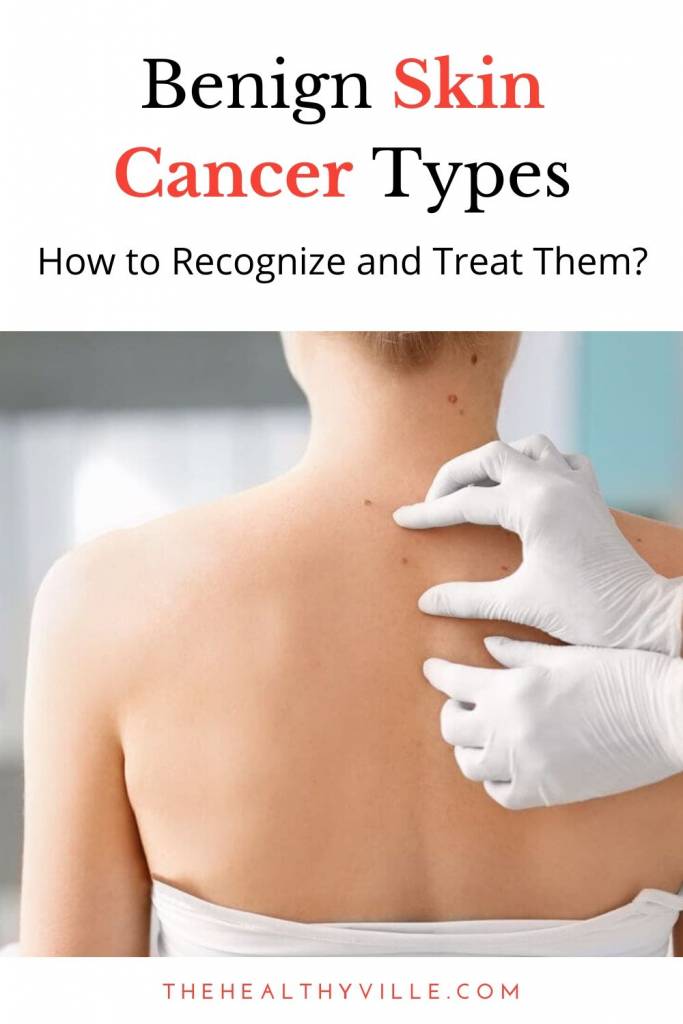Benign skin cancer is often a cause for concern. However, in most cases, this appearance does not cause complications beyond aesthetics. Learn why.
The skin, together with the tissues that make it up, are an area where tumors appear more frequently. The pampering is evident through a dermatological physical examination. Fortunately, for the most part, they are benign tumors that do not cause problems beyond aesthetics.
They can have different origins; from the epidermis, some attachment of the skin or the dermal and subcutaneous connective tissue, to some of the structures that are in the dermis, including nerves and blood vessels.
What do we call a benign skin cancer?
The word tumor or cancer leads us to think of something bad in the first instance, but it is not. A tumor is a mass of tissue that grows autonomously, unrelated to stimuli that control normal tissue growth.
They are so common, it would be very strange to find someone who has not submitted one or more at some point. This does not mean that when there is an alarm signal – such as a new injury that has changed or is bleeding – we should not go to the specialist. They have no gender or age predilection.
They are usually congenital, but they appear and appear throughout life. Only rarely, and over time, can they progress to malignant lesions. For this reason, early diagnosis and evolutionary control are necessary. Next, we detail the most common.
Seborrheic keratosis
It is the most frequent. They appear, in people over 40, on the head, neck and trunk. They are similar to warts, raised, well defined, yellowish or brown and with a smooth or hyperkeratotic surface.
Their size can be between 0.5 and 2 cm and they simulate being attached to the skin. However, it is not considered necessary to treat them. In case they are irritated, or the patient feels discomfort due to aesthetic reasons, the treatment is based on curettage and electrocoagulation, cryotherapy or biopsy.
Skin tags or soft fibroids
They are benign skin formations. It is estimated that 50% of the population has skin tags, and the risk increases with age. They can be caused by genetic predisposition and hormonal factors (especially in women, since they tend to multiply during pregnancy).
They frequently appear in people with obesity and diabetes; For this reason, they have been described as a sign of insulin resistance. They appear in areas of constant rubbing of clothing, such as the neck, armpits and groin. In general, its treatment is performed aesthetically and options include cryotherapy, shaving or electrodesiccation.
Ruby nevi or ruby angiomas
They are red spots that appear throughout life in regions such as the abdomen, neck and face. Also, they are a group of dilated blood vessels on the skin’s surface, which do not pose any risk to the patient’s health.
They affect around 75% of the population over 60 years of age. Quantity and size generally increase over the years. They are more common in diabetic patients and can increase if the individual has exposure to high temperatures.
On the other hand, some come to bleed when traumatized, but this bleeding is very small and does not pose any risk to the person.
Actinic keratoses
It is one of the reasons for frequent consultation both in primary care and in specialist care; 6% of those attended. The incidence is increasing, especially in old age and in people who have worked much of their lives in the sun.
In the first instance, it can be evidenced more by touch than by sight. It is a scaly growth, in the form of a crust that evolves slowly and progressively. It can cause burning or itching and are red or brown in color.
Dermatofibromas
They are small bumps of firm consistency, reddish or brown, caused by the accumulation of fibroblasts. Sometimes they cause itching; in addition, you can usually see them on the legs. When they cause pain or itching, doctors use surgery to remove them.
Dermoid cyst
Made up of hair, sebaceous glands, and sweat glands. Some more internal ones may contain cartilage, teeth and bone fragments. For cosmetic reasons, doctors remove them with a surgical procedure.
General characteristics of benign skin tumors
They are slow-increasing growth lesions, they do not cause infiltration or destruction in the surrounding tissue.
The cells that form it are uniform in appearance and size, and do not metastasize.
The prevalence of benign skin tumors increases considerably with age, in response to functional and structural changes in keratinocytes due to biological aging. It also increases as a consequence of the harmful action of ultraviolet rays that cause free radicals.
Self-examination of the skin
Controlling skin lesions on a regular basis is a recommended practice to prevent future pathologies. Finding new bumps, moles or spots, seeing changes in those that already exist, edges that are not regular and bleeding, can be warning signs to go to the specialist.
There is the rule for the early detection of skin lesions. We detail it below:
- Asymmetry.
- Irregular edges.
- Variable and irregular color, red, blue and black.
- Diameter more than 7 mm wide.
The great variety of benign skin tumors, and the diverse morphological aspect, make its clinical diagnosis difficult; for this reason, histopathology helps to arrive at the definitive diagnosis. The dermatologist is the specialized doctor for the differential diagnosis of these tumors.
Don’t forget to SHARE the benign skin cancer types with your friends and family on your social networks!

